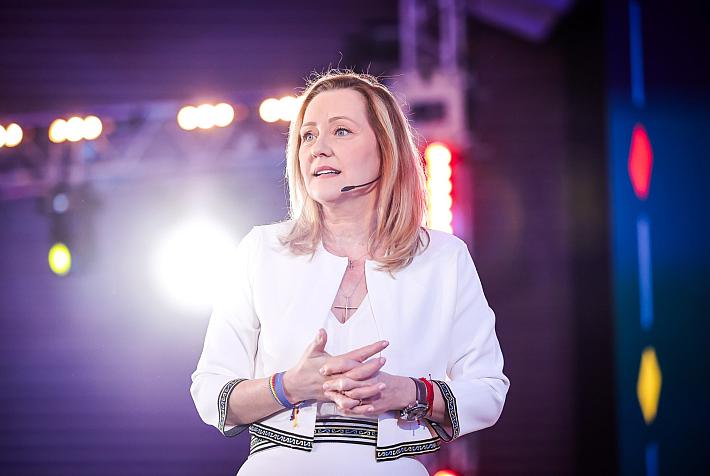Romanian leads pioneering robotics projects at MIT’s largest research lab

Romanian computer scientist Daniela Rus, the head of MIT’s largest interdepartmental research lab, leads a team of scientists working on cutting-edge robotics and artificial intelligence projects.
The Romanian has recently been featured by The Technology Review, in an article that explores the variety of projects Rus and her team develop for a “robot-filled future.”
The 54-year old Rus was born and raised in communist Romania, in a family where her father was also a computer scientist. After they emigrated to the U.S., she studied computer science and mathematics at the University of Iowa and earned her PhD at Cornell University, under the famous computer science theorist John Hopcroft. She was a MacArthur “genius” grant winner in 2002, and is a member of the National Academy of Engineering and of the American Academy for Arts and Science.
She joined the MIT faculty in 2003 and became a co-director of the Computer Science and Artificial Intelligence Lab CSAIL’s Center for Robotics in 2005 and a CSAIL’s associate director in 2008. Hundreds of scientists and students work at CSAIL on more than 800 research projects. She became the director of CSAIL in 2012, and is the first woman to lead the lab.
Some of the projects tested at CSAIL include pill-size robots that can shift through the human body to perform micro-surgeries, drones that pair with self-driving cars and alert for blind spots, a wearable navigation system for blind people, or shock-absorbing robotic skins.
Rus told The Technology Review that her big dream was to have “pervasive robotics integrated into the fabric of everyday life, helping everyone with physical work and cognitive tasks.”
Furthermore, she worked on industry- and government-sponsored projects focused on cybersecurity, autonomous vehicles, machine learning, and health care. One such project was the autonomous-vehicle program, developed together with Toyota. Unlike the driverless cars projects of Google or Uber, this one is focused on vehicles equipped with advanced sensors allowing people to drive safely in crowded cities or bad weather. A car like this would take control if the drivers would find themselves in dangerous situations and act to keep them safe.
Earlier this year, Rus was also featured by TechCrunch as “leading a robotics revolution.” Among others, the article notes the shift in Rus’s work, from the mid-90s research focus on large, industrial robots to the robots that are modular and portable.
A video of Rus explaining a robotic future below.
Romanian leads team that created self-assembling robots
editor@romania-insider.com















